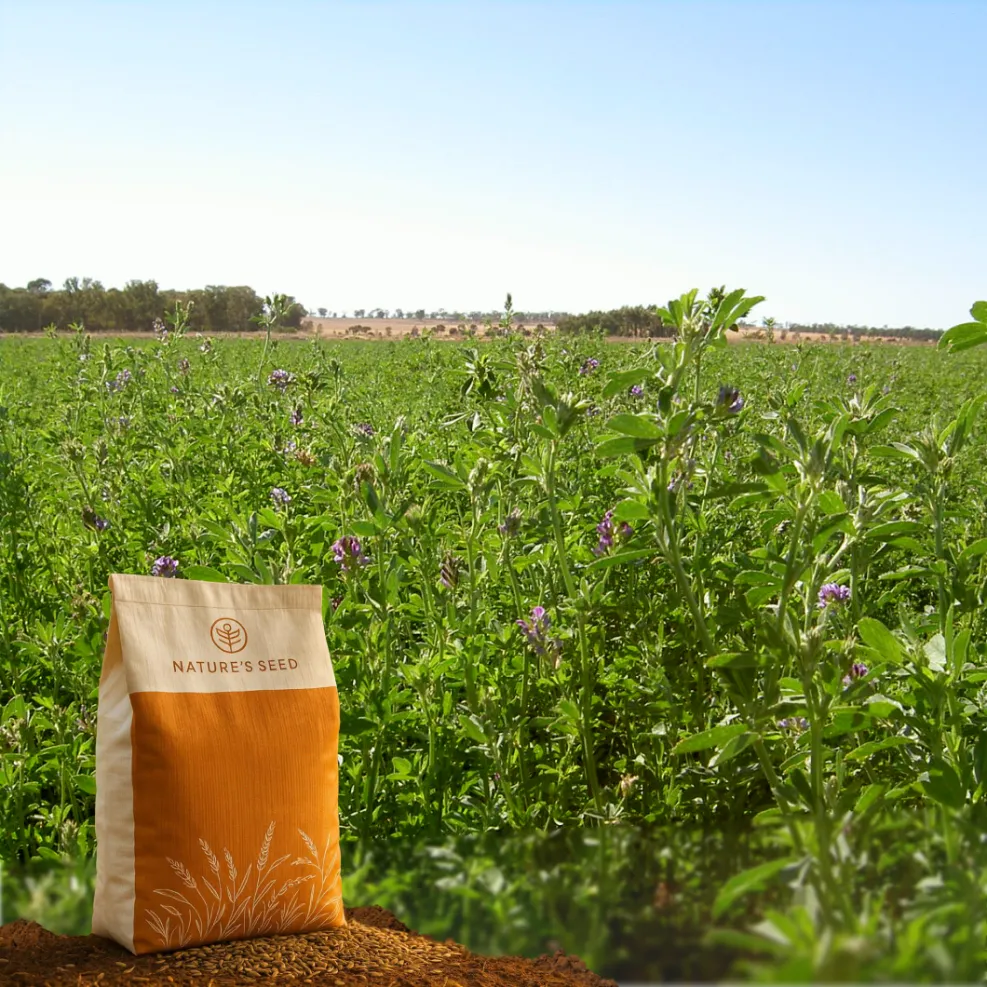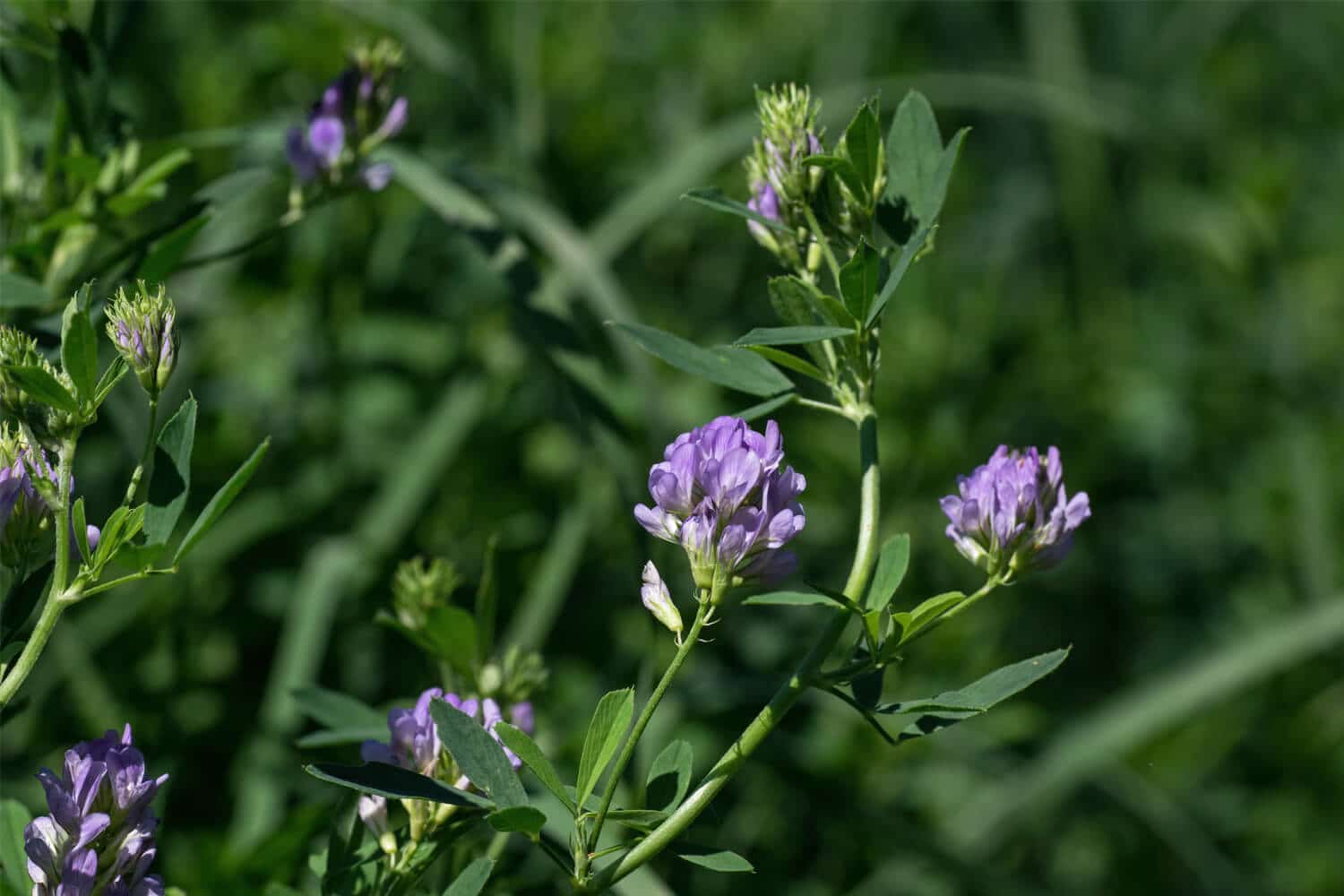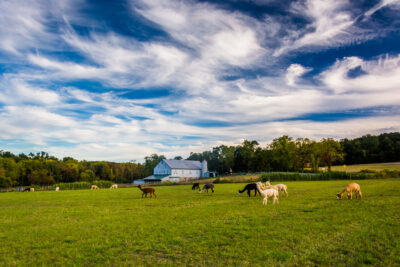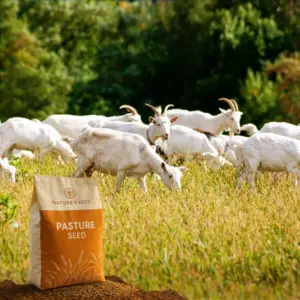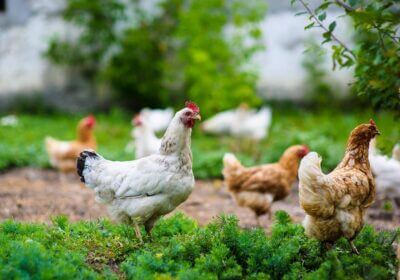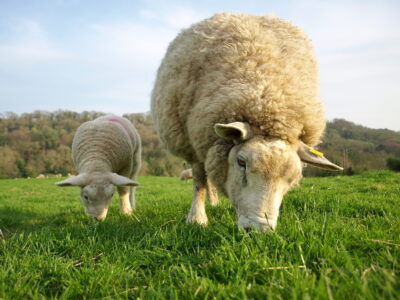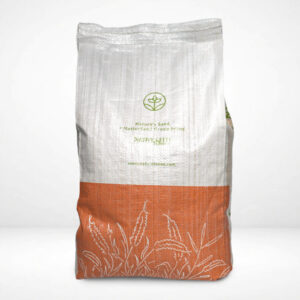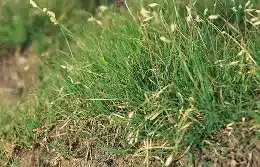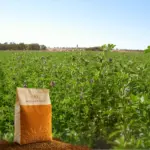
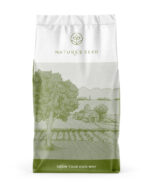
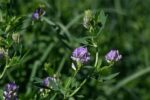
What is Alfalfa?
Alfalfa (Medicago sativa) is a versatile, drought-resilient perennial forage legume. It produces lush, high-protein hay and pasture across USDA zones nationwide (Plains, West, etc.). Deep roots access water and enrich soil, so it thrives with less irrigation. Planted for grazing and hay, it boosts livestock weight gain and supports pollinators and wildlife. Alfalfa also aids erosion control and low-input farming, making it ideal for ranchers, homesteads, and habitat restoration.
Specifications
Sun Requirement
Full Sun
Soil Preference
Deep, well-drained loamy soil
Soil pH
6.5–7.5
Time to Maturity
~60–90 days
Height when mature
2–3 ft tall
Seeding Rate
20 lbs/Acre
Planting Depth
¼ in
Alfalfa Seeds
Medicago sativa | SKU: PG-MESA
- Cattle
- Poultry
- Sheep
- Goats
- Horse
- Bison
- Alpaca/Llama
Will the seed work for your area?
Check your region
select quantity
Description

Drought Tolerance
This perennial’s deep taproot (often 10–15 ft) makes it highly drought-resilient. It can suspend growth and go semi-dormant during dry spells, then rebound quickly when water returns. Compared to many crops, alfalfa often uses water more efficiently by producing multiple harvestable cuts per year
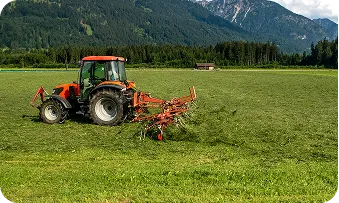
Low Maintenance & Soil Builder
Alfalfa fixes atmospheric nitrogen, requiring little or no nitrogen fertilizer. This reduces input costs and minimizes runoff pollution. Its dense crowns and root systems suppress weeds once established. Alfalfa stands can persist for 4–6 years or more with minimal upkeep, especially on fertile soil.

Erosion Control & Soil Improvement
The thick alfalfa canopy protects soil from raindrop impact and wind, while its fibrous roots bind the soil. When used in crop rotations or mixes, alfalfa reduces erosion on slopes and degraded land. As a “green manure,” plowed-down alfalfa adds organic matter and nitrogen, improving soil structure for future crops.
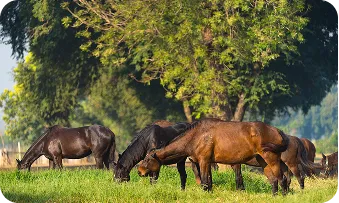
Forage & Grazing Resilience
Alfalfa is prized for its forage quality. It remains leafy and palatable through multiple grazings or harvests. Managed properly (e.g. avoiding over-grazing), it tolerates rotational and strip grazing. In trials, grazing alfalfa produced very high weight gains – dairy and beef cattle averaged 1.5–2.5 lb/day gains. This makes it an excellent high-performance pasture, especially when mixed with grasses to reduce bloat risk.
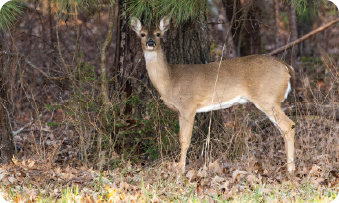
Wildlife & Pollinator Habitat
The purple alfalfa blooms attract pollinators (including honeybees and specialized leafcutter bees) and other beneficial insects. Though honeybees can be “tripped” by alfalfa’s flowers, the nectar-rich blossoms still supply pollen for bees. Birds and game animals feed on alfalfa too – antelope, deer, elk, geese, and grouse readily browse green alfalfa. Establishing alfalfa near water or other fields creates important wildlife forage and cover.
Description
Detail Product
Sun/Shade
Full Sun
Height
2–3 ft tall
Seeding Rate
20 Lb/Acre
Uses
Forage/hay, grazing pasture, soil improvement, cover crop, erosion control, wildlife forage, pollinator habitat.
Color
Foliage – bright green; flowers – purple; seed – brown/black.
Water
Foliage – bright green; flowers – purple; seed – brown/black.
Native
Introduced
Life Form
Cool-season perennial legume
Product Uses

Forage & Grazing
Alfalfa is a premium feed crop. Its high protein and digestibility support rapid livestock gains. It can be grazed directly (with rotational management to prevent overgrazing) or harvested as hay and silage. Because it grows through spring into fall, it supplements grass pastures during summer slumps.
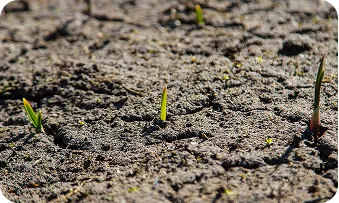
Erosion Control
The dense alfalfa stand and root mass stabilize soil on slopes and disturbed sites. It’s used for pasture renovation, riparian buffers, and reclamation projects. Once established, it holds the soil and adds organic matter. In mix with grasses, it accelerates groundcover establishment on construction sites, hillsides, or stream banks.
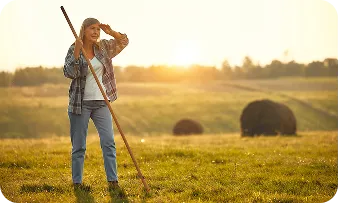
Low-Maintenance Landscaping
For hobby farms and estates, alfalfa provides green groundcover with minimal care. It reseeds moderately, tolerates drought, and outcompetes weeds on good soils. Its soil-enriching quality makes it useful in permanent garden borders or orchards. (Note: alfalfa sends up tall shoots, so it’s not a short lawn grass.)

Wildlife Habitat
Plots of alfalfa supply forage and cover for upland game and birds. Nesting ducks and geese often use alfalfa fields; small mammals forage among its shoots. Birds like quail and pheasant may take shelter in volunteer alfalfa. Its flowers and foliage broadly benefit pollinators and browsers.
Ornamental Appeal
When managed as a cutting flower or meadow, alfalfa’s blooms add color (pale violet) to a field. Cut-and-come-again bouquets of alfalfa blossoms are possible. Its fine foliage texture and uniform height (2–3 ft) can serve as a background or filler in prairie-style gardens. Because it’s a true crop, not a decorative flower, its aesthetic use is secondary but compatible with natural landscaping.
Questions & Answers
How good is alfalfa for animal grazing?
Extremely good – it’s one of the best grazed forages. Alfalfa provides high-quality, leafy feed for cattle, sheep, and goats. In grazing trials, young cattle gained 1.5–2.5 lb per day on alfalfa pasture. For dairy cows or lambs, its protein boosts milk and weight gain. (Because it’s rich, always manage grazing carefully to avoid bloat and overgrazing.)
How and when should I plant alfalfa seed?
Plant in a firm, weed-free seedbed. Sow seed ~¼ inch deep, ideally with a drill or cultipacker-seeder. Use 5–10 lbs/acre for drilled seed (broadcast 15+ lbs/acre). Early spring is best (soil above ~40°F). You can also plant in late July/early August where moisture is assured, but avoid seeding after mid-August in cool climates. Inoculating seed with rhizobia is recommended for best establishment.
Any grazing management tips or risks?
Yes – alfalfa can cause bloat in cattle if overeaten. To use it safely, rotate animals frequently and consider mixing pasture with grasses or trefoil. Introduce livestock slowly and ensure they aren’t starving when first turned in. Grazing is most effective if you allow alfalfa to regrow to 3–4 inches between grazing. Rest periods (usually 20–30 days between grazings) help maintain stand health. Some farmers clip leafy hay or use grazing blocks to reduce bloat.
an alfalfa be mixed with wildflowers or used in restoration plantings?
Yes. Alfalfa’s flowers are valuable to pollinators, and it can be included in wildflower/pollinator mixes. It grows well with many flowering forbs (like clovers, buckwheat, phacelia) on sunny sites. In restoration or cover-crop mixes, alfalfa adds quick biomass and nitrogen. Just remember it can be competitive, so balance it with native grasses/clovers if planting for habitat.
What are hay-type vs grazing-type alfalfa varieties?
Historically, “hay-type” alfalfa produced maximum yield per cutting, while “grazing-type” had more crown buds for persistence under grazing. Today many varieties are dual-purpose, offering both high yield and grazing tolerance. Hay-type may die out faster under heavy grazing; grazing-tolerant varieties survive frequent defoliation. For a mix (hay + graze), choose modern dual-purpose or specific grazing varieties recommended by local extension. Always match variety to your intended use and region.
What hardiness zones and climates suit alfalfa?
Alfalfa thrives in USDA Zones roughly 3–9, covering most of the continental U.S.. It tolerates cold winters (going dormant) and hot summers. It can be grown from irrigated desert basins to mountain meadows; documented from 250 ft below sea level to ~10,000 ft elevation. In extreme heat or humidity, select varieties with proven tolerance. In cold northern areas, allow enough time (6+ weeks) for fall growth to harden before winter.
Still have
questions?
Our planting experts
are here to help.
Call Us
1-800-123-4567
8 AM–5 PM
Monday–Friday
Reviews
| Weight | N/A |
|---|---|
| Dimensions | 1 in |
| Sun/Shade | |
| Est Rate | |
| Texture | |
| Height |
1' – 3' |
| Seeding Rate | |
| Uses | , , , , , , , , |
| Mix Contents | |
| Color | , , , , , |
| Water | |
| Native | |
| Life Form | |
| Lowest price | |
| Pounds | , , , , |
